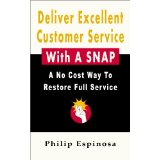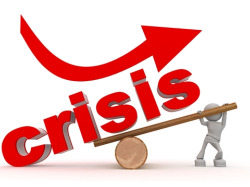When we deliver excellent customer service we are doing our part in an important relationship. We also need and want our customer to do their part. What does  this mean and how do we achieve this?
this mean and how do we achieve this?
I recently was reading a back issue of Fine Homebuilding from Summer 2011. Several lines in the article by John McLean titled “Why Good Clients Lead to Successful Projects” caught my attention.
“There is general agreement,” McLean writes, “that the property owner’s [customer’s] attitude, intelligence, and approach…may have the greatest impact on the quality of the services we provide.”
The author goes on to write: “Clear, honest communication throughout a project is critical.”
Over the past decade or so, I have spent a lot of time working with teams solving significant customer service issues — looking at how the team can improve the service it delivers.
The tendency for many individual team members to solve for their own personal “desktop”. Meaning, an individual solves for their role in the service relationship, however, does not spend much time looking at the relationship from the customers perspective.
John McLean’s article got me to think more about the customer. I can’t just solve my service issues by focusing on myself. I need to know and connect with the customer. I connected the dots in the article. Can I use clear, honest communications to steer the client?
I think so. I think if I spend time to get to know the customer, to understand what the customer wants or needs I then can make sure I meet those needs. I can meet needs that I know about. I find it difficult to meet needs of which I am not aware.
What specific steps do I take to make sure I am using clear, honest communications to engage my customer?
- I don’t solve just for myself. My desktop is only a small part of the customer relationship; in fact, it may be such a small part of the relationship that time spent solving for my desktop is most likely wasted time. I will solve for my desktop in my spare time; not as a starting point.
- I will connect with my customer and find out what the customer wants and needs. I will do this by listening to the customer. This lets me know what the customer’s expectations are. This is the most critical place for me to start. If I can deliver on the customer’s expectations — great. If the customer has unrealistic expectations, then I will make a point of influencing those expectations and brining them into alignment with what I can actually deliver.
- I will use open and honest communications. This is simple, yet not easy. Most people find this difficult. In fact, the communications aspect of the relationship for most of us is so difficult that we avoid it. We intentionally avoid it.
- I will use open and honest communications. Yes, this item is repeated. I repeat it because I chose to ignore it the first time around, so I am now returning to this tactic. I will find time to give this focused time and attention. I will commit to an approach, and I will engage in the discipline to follow the approach.
- I will engage in the discipline of using open and honest communications. Again, repeated — because this is so important. I will go out of my way, at almost any opportunity to inform my customer of these critical aspects of the service I am doing for them. I will let them know the status of things. I will let them know what the next steps are. I will let them know about how long things will take. I will let them know what the planned outcome is going to be.
- I will use this disciplined communication to cultivate my customers, to influence their attitude and their expectations. I know these customers with excellent attitudes, who are intelligent about our relationship and are engaged with the service approach I am following will be more satisfied than other customers who are not engaged.
As Captain Picard is apt to say: “Make it so!”

Latest posts by Philip Espinosa (see all)
- New Tires and Fear of Change - April 14, 2024
- Functional HR vs Organizational HR - February 18, 2024
- How is HR Like a Football Team - February 11, 2024












